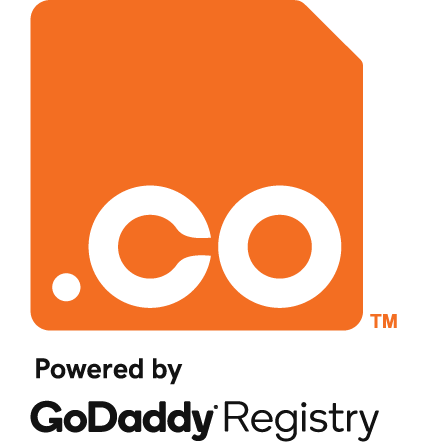Hey, hey, hey .CO friends! I’m here to share some more SEO knowledge with you in order for you to be your SEO best. If you’re just joining us, you’ll want to catch up by reading the rest of our SEO in a Week posts— we’ve covered important SEO topics such as SEO-friendly Design and Development, Link Building, On Site SEO, Keyword Research and Content and Social Media. I also shared my top takeaways from the SMX Advanced conference this year.
Today, I’m bringing you a bonus post which will delve into how you can track your SEO success. Monitoring your progress is one of the most important aspects of SEO. After all, what’s the use in spending all that time optimizing your site if you don’t know if it did anything? While tracking key metrics may sound easy, it can actually get pretty complex. But, have no fear—I’m here to guide you through the process!
Why You Need to Track Stuff
In the ever-evolving world of SEO, your standings in the search engines can change in the blink of an eye. That’s just one of the reasons it is so important to keep an eye on how you’re doing. What are the other reasons, you may ask? Well, in order to succeed, you need to know what’s working and what’s not. Did you make changes to your content, design, and/or-site optimization? What happened afterward? Same goes with technical changes—did you see any indexing problems as a result? What about site outreach, link building and social media…did you receive more traffic as a result? These are just a few things you should be looking at in your ongoing SEO journey.
How Often You Should Look at the Data
Depends on your site and situation—if you’ve made any major changes recently, then you need to check on how you’re doing daily or weekly to keep an eye out for any problems. If that is the case, then keep an eye on key rankings, indexing/crawling, and traffic. It’s usually recommended to track all of your detailed data on a monthly basis. If you haven’t made any recent changes, you’re okay to just track monthly, although many people take a look at their organic traffic and perhaps their key rankings on a weekly basis. You should pull numbers month over month, as well as year over year.
How to Structure Your Reports
A simple Excel spreadsheet will do the trick. Create a tab for each area: Traffic and Analytics Data, Rankings, Indexing and Webmaster Tools Data, Links and Social Mentions.
You can easily export all of your data from Google Analytics and Webmaster Tools. To check rankings, that can get a bit trickier…Google frowns upon automated programs, so you may want to tread lightly if you decide to use a program like Rank Tracker, use caution and don’t check a large amount of terms, and don’t check too often.
If you need to pass along your reports, you can always fancy them up by color-formatting decreases and increases in rankings and traffic and adding in a few charts. If you need to pass them on to your higher-ups, then consider simplifying by putting the key data into a condensed PowerPoint Add just the basics so executive-types don’t get too bogged down: month over month traffic, year over year traffic, key keyword rankings, and new links.
Metrics to Track & What They Mean
In Analytics
- Organic traffic-The visits you receive from organic search engines (non-paid)
- Organic keywords-The exact keywords which are bringing in traffic from organic search engines (non-paid)
- Traffic sources-Which sites are bringing you traffic
- Conversions-Completion of goal activity which you define (see Google Analytics Goals)
- Bounce rate-Visits resulting in the person leaving your site from the entrance page
- Landing pages & content-Page Views to specific pages on your site
- Time on Site-Exact length of time people spend on your site
In Google Webmaster Tools
Health
- Crawl rate-How often Google accesses and crawls your site
- Crawl errors-URL errors which can include Not Found, Not Followed, Access Denied, Server Error, or Soft 404
Optimization
- Sitemaps-Details about the sitemap.xml you submitted, including any errors and the last time Google accessed it
- HTML Improvements-Problems with your page titles and meta descriptions, as well as any content Google is having problems indexing
Traffic
- Search Queries-Total amount of search queries over the specified period
- Impressions-The number of times pages on your site appeared in the search results
- Clicks-The number of times that a user clicked on a page from your site for a specific query
- Click Through Rate-The percentage of impressions resulting in a click to your website
- Average Position-Average top position your website is returning on the search results for that particular query
- Links to Your Site-A sampling of the most common links to your site
External Factors
- Rankings-How your site ranks in the search engines for a particular term
- Links-External links to your site
- Social Mentions-Mentions of your website on Twitter, Facebook and other social media
Houston, We Have a Problem
Ok, so you’re taking out the time to track all this stuff, but what are you supposed to do with it? What should you be on the lookout for? Here is a list of red flags and possible causes:
- Traffic decrease
Decrease in rankings
Problems with crawling or titles and descriptions - Increase in site crawl errors
Technical issues such as broken links, 404s, or strange things happening with the robots.txt or meta-tags - Sharp decrease in traffic to a specific page or content area
Technical issues or design problems - Drastic decrease in rankings
Link issues
Duplicate content problems
Technical issues - Dramatic increase in bounce rate
Design, technical or usability issues
In a nutshell, if you see any of those red flags, you should conduct testing and dive deeper. Go page-by-page searching for any problems or issues. Pull your links and see if there are any questionable sites there. Check to see if your content is duplicated—you can quickly do this by copying and pasting a few sentences, putting it in quotes, and pasting it in the Google search box to see what sites come up. Review any changes you may have made, whether they be design, content, code…you name it.
Resources & Tools
SEOMoz Pro-A complete suite of SEO tools to check links, perform a sit crawl, and more
RankChecker-Free ranking tracker
HootSuite-Manage social media campaigns and find new brand mentions
Google Analytics Help-In-depth info about using Google Analytics
Google Webmaster Tools Help-Tips and FAQs about using Google Webmaster Tools
I hope I’ve armed you with the basic knowledge you need to effectively track your SEO progress. To remind yourself to track regularly, I suggest adding a reminder on your calendar to pull the data—perhaps every Friday, as well as the last week of the month.
Be sure to check out my past SEO posts on the blog, and also keep in mind that you can sign up for the .CO Membership Program. Our Membership Program allows you to receive all kinds of awesome perks and benefits, including an hour-long custom SEO consultation with yours truly. Remember to keep on visiting the .CO blog for more SEO posts, as well as .CO news, events, research and tips and tricks.




